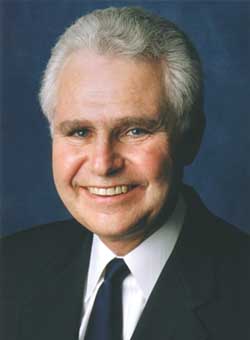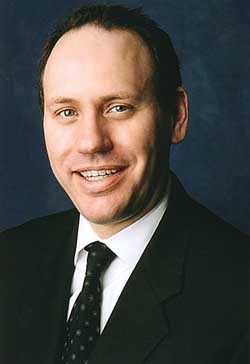California’s GHG plan gives power heaviest load

Steven F. Greenwald

Jeffrey P. Gray
On Sept. 12, the California Public Utilities Commission (CPUC) and California Energy Commission (CEC) took the next step in the implementation of Assembly Bill (AB) 32, California’s ambitious greenhouse gas (GHG) emissions – reduction initiative, with the release of a 300-page proposed decision on GHG regulatory strategies. AB 32 requires the California Air Resources Board (ARB) — the agency responsible for adopting rules and regulations to meet emissions-reduction goals — to "consult" with the CPUC and CEC on issues "that pertain to energy related matters."
The proposed decision would recommend to ARB a combination of both programmatic and market-based mechanisms to reduce GHG emissions in the electricity sector. The recommendations include implementation of "aggressive" energy-efficiency programs, an increase in renewable energy procurement requirements from 20% to 33%, and creation of a broad, multisector cap-and-trade program. Though these measures come as no surprise (see POWER, August 2008, p. 30), the proposed decision highlights the disproportionate burden the electricity sector is expected to bear over the long term as California gets into the nuts and bolts of reducing GHG emissions.
Power generation: an easy target
The reality that the power sector would be required to reduce GHG emissions was recognized by most in the industry well before enactment of AB 32. Nevertheless, few would have predicted the extent to which California regulators would disproportionately lean on the power generation sector to achieve the state’s emissions-reduction goals.
Power generation currently produces about 20% of California’s GHG emissions, yet regulators are asking the sector to account for nearly 40% of the state’s total GHG reductions, not counting reductions to be realized under the cap-and-trade program. In contrast, the transportation sector, which accounts for approximately 41% of the state’s GHG emissions, is being asked to contribute only 45% of the total statewide reductions.
This disparate treatment is unsurprising. Large stationary sources of GHG emissions, such as power plants, are much easier to identify and regulate than automobiles. Traditional ratemaking principles and accepted social policies also allow regulators to "socialize" compliance costs associated with reducing emissions in the electricity sector across a broad base of utility customers. From a political perspective, opposition to increasing electricity prices has rarely approached the level of consumer outrage over run-ups in gasoline price or increases in license fees.
Electricity is part of the solution
Against this backdrop is the realization that the power sector, including new fossil-fueled generation, likely holds the key to the success of AB 32. At a recent industry conference, Yakout Mansour, president and CEO of the California Independent System Operator, expressed the view that California would need all exiting fossil-fueled generation to support the addition of new intermittent renewable resources that are necessary to meet the state’s emission reduction goals. Given the age of the generation fleet and the fact that older plants were not designed to operate as "firming" resources for renewable generation, it is likely that new fossil-fueled generation will also be needed.
The efforts of other sectors to reduce their GHG emissions will put an additional strain on the state’s generation capacity. These sectors are expected to increasingly substitute electricity for GHG-emitting fuels, such as natural gas and petroleum. For instance, plug-in hybrids are being touted as an emissions-reduction solution in the transportation industry. The success of this technology, however, rests in large part on the ability of car owners to charge their automobiles overnight. Given the intermittency of wind generation, the inability of solar to generate at night, and the cost of currently available energy storage options, the success of a plug-in hybrid program will likely rest on sufficient fossil-fueled generation remaining available during off-peak periods.
The application of AB 32 across the economy creates a challenge for regulators: Regulators are seeking significant emissions reductions from the electricity sector at the same time as other industry sectors will be using more electricity to reduce their own carbon footprints.
New opportunities
Notwithstanding the many challenges confronting the power generation sector, the implementation of AB 32 should provide new opportunities for growth in the industry. Increased renewable procurement obligations and the need to firm intermittent resources is good news to developers of both renewable and fossil-fueled generation. The AB 32 imperative to increase energy efficiency is already encouraging the development of new technologies and green building techniques. It has been reported that more than $2.8 billion of venture capital funding was invested in green energy technologies in the third quarter of 2008. That’s more than double the investment made in the second quarter and nearly triple the first quarter number.
The challenge: Find the right balance
AB 32 allows the state only eight years (2012 to 2020) to reduce projected GHG emissions by roughly 30% from forecasted 2020 levels, or 168 million metric tons of CO 2. During this period, the electricity sector will be required to significantly reduce its GHG footprint while ensuring that sufficient generating resources are available to support the efforts of other sectors to reduce emissions.
The ability to meet these two conflicting goals will depend on the power industry’s creativity and innovation. The gauntlet has been thrown down. Stay tuned to see who picks it up.
—Steven F. Greenwald ([email protected]) leads Davis Wright Tremaine’s Energy Practice Group. Jeffrey P. Gray ([email protected]) is a partner in the firm’s Energy Practice Group.